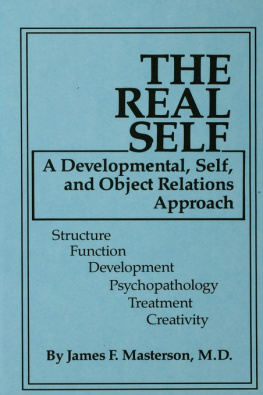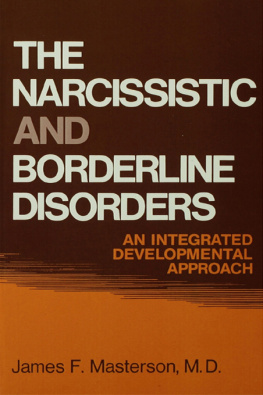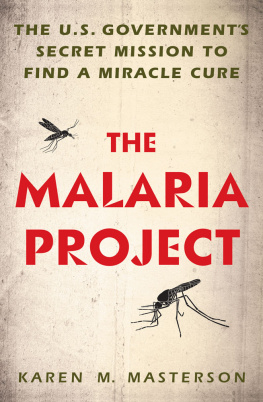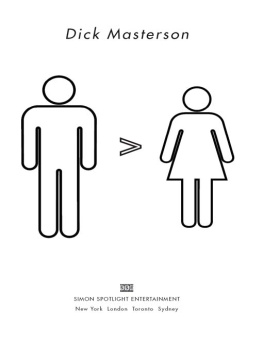
THE REAL SELF
A Developmental, Self, and Object Relations Approach
By James F. Masterson, M.D.
The Psychiatric Dilemma of Adolescence
Treatment of the Borderline Adolescent: A Developmental Approach
From Borderline Adolescent to Functioning Adult: The Test of Time
Psychotherapy of the Borderline Adult
The Narcissistic and Borderline Disorders
Countertransference and Psychotherapeutic Technique
THE REAL SELF
A Developmental, Self, and Object Relations Approach

By James F. Masterson, M.D.

Library of Congress Cataloging in Publication Data
Masterson, James F.
The real self.
Bibliography: p.
Includes index.
1. Personality, Disorders of. 2. Self.
I. Title. [DNLM: 1. Ego. 2. Personality Development.
3. Psychoanalytic Theory. 4. Psychotherapy.
WM 460.5.E3 M423r]
RC554.M275 1985 616.89 85-12824
ISBN 0-87630-400-5
Copyright 1985 by James F. Masterson
Published by
BRUNNER/MAZEL, INC.
19 Union Square West
New York, New York 10003
All rights reserved. No part of this book may be reproduced by any process whatsoever without the written permission of the copyright owner.
MANUFACTURED IN THE UNITED STATES OF AMERICA
10 9 8 7 6
Acknowledgments
I would like to thank Mrs. J. Kelly for typing the manuscript, and my wife for filling in when necessary. In addition, I would like to thank my colleague, E. T. Carlson, M.D., psychiatrist and historian, for his stimulation and interest in the study of Thomas Wolfe and Jean Paul Sartre. Finally, I am grateful to Ralph Klein, M.D., and Candace Orcuff, Ph.D., for their helpful suggestions on the manuscript.
James F. Masterson
Part 1
THEORY AND CLINICAL WORK
CHAPTER I
Acknowledgment of the Emerging Real Self
The real self emerges in early intrapsychic development, grows throughout latency and adolescence, and then in adulthood must be articulated in reality. This search to consciously identify and express the real self may involve many changes in external behavior over a long period of time. If the expression is appropriate, it reinforces and strengthens the inner real self in circular feedback fashion. However, unarticulated aspects of the real self may lie dormant for many years, only to surface in surprising ways in later life.
Malcolm Cowley (1984), referring to writing his memoirs at age 85, said,
When I was a college student and I heard other students asking Who am I, I listened to them with sympathy but also with a measure of disdain. When I was their age I knew damn well who I was. Now, however, I am not so certain. Since I am 85 the question comes back to me, if in a slightly different formWho was Iand the answer is not always what I had expected. If this memoir in which I am engaged has accomplished its task I shall have discovered or unveiled a shape in time. I shall have revealed to myself the person who is possibly the real me. (p.1)
In addition, he may still uncover some new unarticulated aspects of his real self.
The ideas presented in this volume are not revealed knowledge and did not spring full grown like Athena from the head of Zeus. They emerged from a long, slow, often laborious and tedious professional struggle which required the grappling with and resolution of both personal conflicts and professional challenges. The personal struggle involved in developing and refining these theoretical and clinical ideas helped me, like Malcolm Cowley, to more precisely refine and define, as well as fulfill, my real self.
In retrospect, it seems that I have been hovering over or circling around the emotional problems of the self for some 30 years, gradually working through and trying to master the outer layers of the problem in order to probe the corea concept of the real self and its disorders. For example, I began my work at the most superficial layera descriptive approach to the diagnostic problems of personality disorders in adolescence (Masterson, 1967). This led to the next layera psychoanalytic approach that shifted the focus of study of the personality disorders from adolescence to the first three years of life (Masterson, 1972). The vehicle for this penetration to a deeper layer was the linking of an understanding of normal separation-individuation with object relations theory (Mahler, 1975; Mahler & McDevitt, 1982; Masterson, 1967, 1972, 1976, 1980, 1981, 1983).
However, although acknowledgment was given to the self tangentially in this theory of separation-individuation, the perspective emphasized object relations, not the self. The self seemed to tag along just for the sake of completion. The confusion in psychoanalytic theories of the self only seemed to compound the problem. The conceptual gap was unsatisfactorily filled by concepts of the ego and ego identity. Nevertheless, dramatic improvements in understanding of the patients problems and in psychotherapy emerged from all these developments. Yet the core remained elusive, the nettle was not being grasped.
Despite this, the self continued to make its clinical presence felt and to press for further attention. In our follow-up study of treated borderline adolescents (Masterson, 1980), the importance of self-image, self-activation and self-assertion stood out like a neon sign. At the same time, for reasons I have described elsewhere, Kohuts notion of the self (1971, 1977), particularly its therapeutic implications for the borderline patient, seemed to me to leave a great deal to be desired.
I found myself, without intention or plan, focusing more and more in my work with patients on the patients self to the point of spontaneously developing one symbol [s] when the patient was activating his or her real self in the session and another [o] for the relationship with objects. I began thinking and talking more and more in terms of a real and defensive self as it became clearer and clearer in the clinical material. Only after I had been using this concept of the self in psychotherapy for several years did I finally decide that I had to think it through further, organize it and describe it if only to clarify it for myself and to get it out of my system. This clarification also helped to further define the use and function of the therapeutic technique of communicative matching which I had described before but not fully developed.
This 30-year quest has clarified and reinforced my own professional real self which has now in this book led to a theory that hopefully can help others to clarify and define their selves. This theory shifts the focusthe microscope of observation and studyin development and disorder from the objectobject relationsto the self; instead of thinking primarily in terms of objects and ego, we can think of the self with its objects and its ego. After all, in our daily toil with our patients, our work revolves around a person with a self, not a collection of objects and an ego.
This book adds to and in some respects is a culmination of my prior work in developmental object relations theory. Therefore, it cannot be considered apart from all that work. Substantial distortions could occur if the reader were to read only this book or attempt to understand it apart from that larger body of work.
Next page













